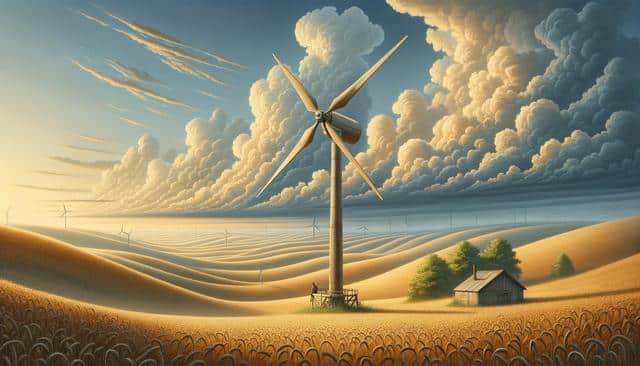The Rise of DIY Wind Power Solutions
In recent years, the concept of DIY wind power solutions has gained traction among homeowners seeking sustainable energy alternatives. With the advancements in technology and the increasing availability of affordable components, creating a personal wind power plant is becoming a feasible project for many. These DIY home wind turbines are particularly appealing due to their potential to contribute to energy independence and reduce reliance on traditional power sources.
The appeal of these systems lies in their ability to harness wind energy in a practical and cost-effective manner. This trend is expected to gain even more momentum by 2025 as more individuals recognize the environmental and monetary benefits of generating electricity through wind power. Homeowners can select from a range of small and quiet wind generators that are designed to be efficient and minimally intrusive on their properties.
Understanding the Components of Wind Turbines
To successfully build a DIY wind power plant, it’s essential to understand the components involved in the construction of wind turbines. A typical home wind turbine system consists of several key parts:
- Rotor Blades: These capture wind energy and convert it into rotational energy.
- Generator: Converts the rotational energy into electrical energy.
- Tower: Provides the necessary height to capture wind effectively.
- Controller: Manages and regulates the flow of electricity from the turbine to the storage system.
- Battery Storage: Stores the electricity generated for use when wind speeds are low.
Each of these components plays a crucial role in ensuring the efficiency and effectiveness of the wind power system. Selecting high-quality materials and components is vital to the longevity and performance of the DIY wind turbines.
Advantages of Small and Quiet Wind Generators
Small and quiet wind generators offer a range of benefits, making them an attractive option for homeowners. One of the primary advantages is their ability to operate efficiently in areas with lower wind speeds, which is a common limitation of larger turbines. This feature makes them particularly suitable for residential settings where consistent strong winds might not be available.
Furthermore, these generators are designed to minimize noise pollution, ensuring that they do not disrupt the tranquility of the home environment. This is especially important for individuals living in close-knit communities where noise regulations may be stricter. Also, their compact size allows for easier installation and maintenance, making them a practical choice for DIY enthusiasts.
Steps to Implementing a DIY Wind Power Project
Embarking on a DIY wind power project involves several essential steps to ensure successful implementation:
- Site Assessment: Evaluate your property to determine the best location for the wind turbine, considering factors such as wind direction and obstructions.
- Component Selection: Choose suitable components based on your energy needs and budget.
- Assembly: Follow detailed guides or instructions to assemble the wind turbine, ensuring all parts are securely attached.
- Installation: Properly install the turbine on the tower and connect it to the electrical system.
- Testing and Monitoring: Regularly monitor the system’s performance to make necessary adjustments and optimize efficiency.
By following these steps, homeowners can successfully harness wind energy, contributing to a more sustainable lifestyle.
Challenges and Considerations for DIY Enthusiasts
While DIY wind power projects offer numerous benefits, there are also challenges and considerations to keep in mind. One of the primary challenges is the initial investment required for high-quality components, which can be a barrier for some homeowners. Additionally, ensuring compliance with local regulations and obtaining necessary permits may require extra effort and research.
Another consideration is the variability of wind energy, which may result in inconsistent power generation. Homeowners should assess their energy needs and understand that supplementary power sources might be necessary during periods of low wind activity.
Despite these challenges, the satisfaction of creating a functional and sustainable energy source at home often outweighs the obstacles, making it a rewarding project for those passionate about renewable energy.
Conclusion: Embracing the Future of Home Energy
As the demand for renewable energy solutions continues to grow, DIY wind power projects are emerging as a viable and attractive option for homeowners looking to reduce their carbon footprint and energy costs. By investing in small and quiet wind generators, individuals can take an active role in the shift toward sustainable energy consumption.
By 2025, the landscape of home energy solutions is set to evolve significantly, with DIY home wind turbines playing a pivotal role in this transformation. For anyone considering this endeavor, the journey towards energy independence and environmental responsibility starts with understanding the components, benefits, and challenges associated with wind power projects.
